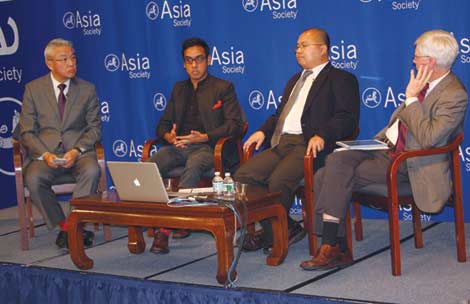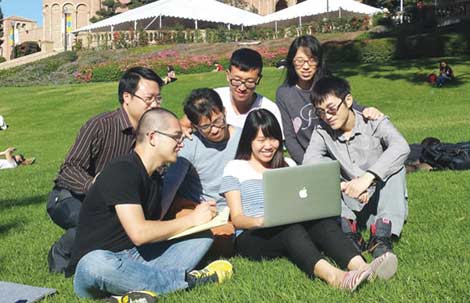Immigrants get help with tough hurdles
Updated: 2014-08-18 11:01
By Elizabeth Wu in New York(China Daily USA)
|
||||||||
Most immigrants to the US begin their Americanization by learning English. Though some are faster learners than others, it is wrong to assume that Chinese or Asian learners are more advanced than others.
The "model minority" myth about how Asians are academically high achieving with great careers is not true for all. In fact, new low-income immigrant children to the states have difficulty learning English, according to Teach for America.
Chinese children are more passive and less likely to ask for help, according to Amy Lin, director of alumni in schools at Teach for America. Lin taught English to fifth-grade, second-language learners at PS 94 in Brooklyn, New York from 2005 to 2007.
According to the US Census Bureau, the largest population of Chinese living in the US is in the Greater New York tri-state area with 735,019, and 522,619 of those are in New York City.
Most schools with English learning programs cater to blacks and Hispanics, so Amy was surprised when Teach for America was able to place her at a school with a majority of Chinese and Hispanic students.
"When the Hispanic kids in my class didn't understand something they would act out. The Chinese students having a hard time weren't as expressive," said Lin.
Lin said because of this only during grade assessment time, teachers would realize some of the Chinese kids didn't understand what they were being taught in class.
"It was easy for teachers to have students fall through the cracks," said Lin. The Chinese students were more passive, so it was hard to realize they were having problems at first, she said.
Lin's students not only had to deal with culture shock, but also with the struggles of living in a low-income family, which all of Lin's students did. They qualified for free and reduced lunch, she said. Their unstable home lives hindered their ability to focus on learning.
Lin noticed her Chinese student speakers caught on with reading and writing faster, but their speaking was slower. Her Hispanic students had more advanced speaking skills and caught on quicker to the language, but academically they were not as strong.
Contact the writer at readers@chinadailyusa.com
For China Daily
(China Daily USA 08/18/2014 page2)
- Xinjiang publishes anti-terror brochures
- Security pact sealed with Afghanistan
- President Xi encourages international cultural exchanges
- Premier Li: China willing to help Afghan infrastructure
- Chinese FM: China, Asia-Pacific become community of shared destiny
- Foreign minister remarks on possibility of China-Japan summit
Most Viewed
Editor's Picks

|

|

|

|

|

|
Today's Top News
VW defends safety of recalled New Sagitar
Former premier makes Hurun philanthropists list
Xinjiang publishes anti-terror brochures
SOHO endows $10m to Yale
Cook and Ma talk about partnership
Language a barrier to healthcare for Asian Americans
China businesses need innovation: VC
Security pact sealed with Afghanistan
US Weekly

|

|















